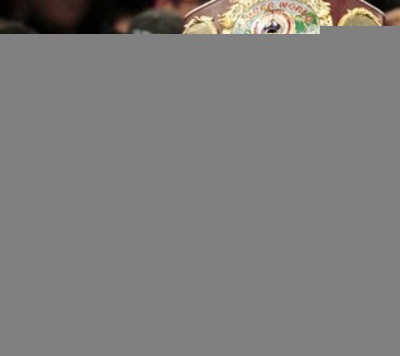As impressive as Manny Pacquiao’s 2008 Fighter of the Year campaign was, his 2009 campaign exceeded it. Numerically. Historically. Competitively. Intangibly.
In 2008, he edged the best opponent of his career, Juan Manuel Marquez, at junior lightweight; moved up to lightweight and beat a top-10 man in the division, David Diaz; then jetted up two more weight classes to knock out the most famous opponent of his career, Oscar De La Hoya. His year was compared to what one of the top five or so best fighters ever, Henry Armstrong, achieved by hopping from featherweight to welterweight in 1938 and holding the championships in all those divisions at once, and the comparison wasn’t absolutely ludicrous. That’s a good year.
But it wasn’t as good as what Pacquiao did in 2009. And when you compare better and worse, you have to come up with reasons for how something’s better or worse. It’s true that many, myself included, don’t think Pacquiao beat Marquez, although it was a close fight and I have no gripe with the outcome. It’s true that Diaz was an undertalented overachiever who didn’t even have to “win” his alphabet title belt — it was handed to him because a sanctioning organization just flat stripped someone else of it — and it’s the least impressive of the many belts Pacquiao has won. It’s true that De La Hoya was weight-drained and aging. That’s still a really nice year. Beating Marquez ain’t easy. De La Hoya was the betting favorite, and Pacquiao retired him. Diaz — OK, not much there, but Diaz did better than De La Hoya, so there’s that.
What did he do in 2009? In May, he took Ricky Hatton’s lineal championship at junior welterweight, giving Pacquiao the all-time boxing record of four true championships in four different divisions. You can’t take that away from him by pointing out that there are more divisions now than there used to be. By winning lineal championships at flyweight, featherweight, junior lightweight and junior welterweight, Pacquiao actually strided over four “traditional” weight classes: flyweight, bantamweight, featherweight and lightweight. He even threw in an extra five pounds, and had he wanted to, he probably could have stuck around some of the other weight classes and taken a few more lineal straps. You can say Hatton wasn’t that good, or that Hatton wasn’t the same after the Floyd Mayweather knockout, but I’d answer you that he is one of the best junior welterweights ever, a sure Hall of Famer and was a consensus top-10 pound-for-pound boxer when Pacquiao scorched him with the clear Knockout of the Year.
In November, Pacquiao moved back to welterweight to face a real welterweight (unlike the boiled-down De La Hoya), arguably the best welterweight around: Miguel Cotto. For about five rounds, Pacquiao-Cotto was a Fight of the Year-worthy affair, with the fourth a Round of the Year candidate. There are some who have suggested since that Cotto was damaged from the Antonio Margarito debacle — even Pacquiao trainer Freddie Roach said so — but in those opening rounds, Cotto still looked world-class to me, like a boxer worthy of the top-5 pound-for-pound status he’d earned. But Pacquiao planted the seeds of Cotto’s destruction in the 4th with a nasty uppercut that badly dazed Cotto, and Cotto won the 5th on heart alone. After that, Pacquiao — remember, the guy moving UP in weight — bullied and battered Cotto something merciful. In stopping him in the 12th round, Pacquiao claimed his seventh title belt in seven weight classes, although Cotto earned his alphabet title belt via dubious means, by fighting unworthy Michael Jennings for the vacant strap. Still, even in this age of title belt proliferation, nobody had ever won seven in seven divisions.
For his place in the sport, 2008 was a good year. He became the best active boxer of any weight, and he got name recognition by beating De La Hoya. For his place in the sport, 2009 was a freaking fantastic year. With Mayweather back in the picture after a brief retirement, some put the gifted American back at the #1 pound-for-pound spot, but now only a stubborn few refuse to acknowledge that the Filipino is the pound-for-pound king. Because of his 2009, some serious historians now place Pacquiao among the top-20 all-time greats. And by owning the top-selling pay-per-view event for 2009, Pacquiao became the top name in the sport, too. Yet it’s not just what he’s accomplished — it’s how he accomplished it. He did it all with a crackling energy that moved people, that translates easily to the untrained eye as greatness.
In rising to the level he has, Pacquiao has also lifted the sport. In my years as a boxing writer prior to 2009, insofar as I’ve had conversations with non-boxing fans about my hobby, I’d say the topics people wanted to talk to me about the most were things like Mike Tyson’s latest arrest or why in the hell Evander Holyfield was still fighting. That’s changed. My friend Shweta came to me yesterday to chat about an NPR feature on Pacquiao. My friend Matt sent me an e-mail recently saying, “Wait, Pacquiao’s running for Congress in the Philippines?” And it goes on and on like that. No one boxer can save boxing; no one fighter’s departure can kill it. But one boxer can lift it, and we long-suffering boxing fans now can hold our heads high because of what happened in 2009, no longer confined to the shadows of our obscure hobby like Dungeons & Dragons nerds or something.
Manny Pacquiao is a gift.

